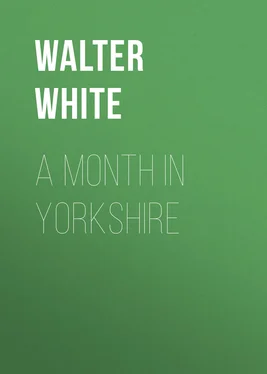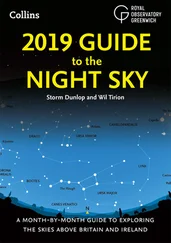Walter White - A Month in Yorkshire
Здесь есть возможность читать онлайн «Walter White - A Month in Yorkshire» — ознакомительный отрывок электронной книги совершенно бесплатно, а после прочтения отрывка купить полную версию. В некоторых случаях можно слушать аудио, скачать через торрент в формате fb2 и присутствует краткое содержание. Жанр: Путешествия и география, История, foreign_edu, foreign_antique, foreign_prose, на английском языке. Описание произведения, (предисловие) а так же отзывы посетителей доступны на портале библиотеки ЛибКат.
- Название:A Month in Yorkshire
- Автор:
- Жанр:
- Год:неизвестен
- ISBN:нет данных
- Рейтинг книги:3 / 5. Голосов: 1
-
Избранное:Добавить в избранное
- Отзывы:
-
Ваша оценка:
- 60
- 1
- 2
- 3
- 4
- 5
A Month in Yorkshire: краткое содержание, описание и аннотация
Предлагаем к чтению аннотацию, описание, краткое содержание или предисловие (зависит от того, что написал сам автор книги «A Month in Yorkshire»). Если вы не нашли необходимую информацию о книге — напишите в комментариях, мы постараемся отыскать её.
A Month in Yorkshire — читать онлайн ознакомительный отрывок
Ниже представлен текст книги, разбитый по страницам. Система сохранения места последней прочитанной страницы, позволяет с удобством читать онлайн бесплатно книгу «A Month in Yorkshire», без необходимости каждый раз заново искать на чём Вы остановились. Поставьте закладку, и сможете в любой момент перейти на страницу, на которой закончили чтение.
Интервал:
Закладка:
Yonder rises the lighthouse, surprisingly far, as it seems, to seaward, at times half hidden by a thin, creeping haze. And from Spurn to Sunk Island this whole northern shore is of the same brown, monotonous aspect: a desert, where the only living things are a few sea-birds, wheeling and darting rapidly, their white wings flashing by contrast with the sad-coloured shore.
I walked along the top of the bank to Kilnsea, deceived continually in my estimate of distance by the long dead level. Here and there a drain pierces the bank, and reappears on the outer side as a raised sewer, with its outlet beyond high-water mark; and these constructions, as well as the waifs and strays—old baskets and dead seagulls—cheat the eye strangely as to their magnitude when first seen. At times, after a lashing storm has swept off a few acres of the mud, the soil beneath is found to be a mixture of peat and gravel, in which animal and vegetable remains and curious antiquities are imbedded. Now and then the relics are washed out, and show by their character that they once belonged to Burstall Priory, a religious house, despoiled by the sea before King Harry began his Reformation. Burstall Garth, one of the pastures traversed by the bank, preserves its name: the building itself has utterly disappeared.
Suddenly a gap occurs in the bank, showing where the unruly tide has broken through. For some reason the mischief was not repaired, but a new bank was constructed of chalk and big pebbles, about a stone’s throw to the rear. A green, slimy pool still lies in a hollow between the two.
The entertainment at the Crown and Anchor at Kilnsea by no means equals the expectations of a stranger who reads the host’s aristocratic name— Metforth Tennison —over the door. I found the bread poor; the cheese poorer; the beer poorest; yet was content therewith, knowing that vicissitude is good for a man. The place itself has a special interest, telling, so to speak, its own history—a history of desolation. The wife, pointing to the road passing between the house and the beach, told me she remembered Kilnsea church standing at the seaward end of the village, with as broad a road between it and the edge of the cliff. But year by year, as from time immemorial the sea advanced, the road, fields, pastures, and cottages were undermined and melted away. Still the church stood, and though it trembled as the roaring waves smote the cliff beneath, and the wind howled around its unsheltered walls, service was held within it up to 1823. In that year it began to yield, the walls cracked, the floor sank, the windows broke; sea-birds flew in and out, shrieking in the storm, until, in 1826, one-half of the edifice tumbled into the sea, and the other half followed in 1831. The chief portion of the village stands on and near the cliff, but as the waste appears to be greater there than elsewhere, houses are abandoned year by year. In 1847, the Blue Bell Inn was five hundred and thirty-four yards from the shore; of this quantity forty-three yards were lost in the next six years. Kilnsea exists, therefore, only as a diminished and diminishing parish, and in the few scattered cottages near the bank of the Humber. The old font was carried away from the church to Skeffling, where it is preserved in the garden of the parsonage.
Her reminiscences ended, the good woman talked of the rough walking that lay before me. It was a wild place out there, not often visited by strangers; but sometimes “wagon loads o’ coontra foak cam’ to see t’ loights.” At one time, as I have heard, a stage-coach used to do the journey for the gratification of the curious.
A short distance beyond the Crown and Anchor stands a small lone cottage built of sea-cobbles, with a sandy garden and potato-plot in front, and a sandy field, in which a thin, stunted crop of rye was making believe to grow. Once past this cottage, and all is a wild waste of sand, covered here and there with reedy grass, among which you now and then see a dusty pink convolvulus, struggling, as it were, to keep alive a speck of beauty amid the barrenness. Here, as old chronicles tell, the king once had ‘coningers,’ or rabbit-warrens, and rabbits still burrow in the hillocks. Presently, there is the wide open sea on your left, and you can mark the waves rushing up on either side, hissing and thundering against the low bank that keeps them apart.
“A broad long sand in the shape of a spoon,” is the description given of Spurn in a petition presented to parliament nearly two hundred years ago; and, if we suppose the spoon turned upside down, it still answers. It narrows and sinks as it projects from the main shore for about two miles, and this part being the weakest and most easily shifted by the rapid currents, is strengthened every few yards by rows of stakes driven deeply in, and hurdle work. You see the effect in the smooth drifts accumulated in the space between the barriers, which only require to be planted with grass to become fixed. As it is, the walking is laborious: you sink ankle-deep and slide back at every step, unless you accept the alternative of walking within the wash of the advancing wave. For a long while the lighthouse appears to be as far off as ever.
A little farther, and we are on a rugged embankment of chalk: the ground is low on each side, and a large pond rests in the hollow between us and the sea on the left, marking the spot where, a few years ago, the sea broke through and made a clean sweep all across the bank. Every tide washed it wider and deeper, until at last the fishing-vessels used it as a short cut in entering or departing from the river. The effect of the breach would, in time, had a low-water channel been established, have seriously endangered the shore of the estuary, besides threatening destruction to the site of the lighthouse. As speedily, therefore, as wind and weather would permit, piles and stakes were driven in, and the gap was filled up with big lumps of chalk brought from the quarry at Barton, forming an embankment sloped on both sides, to render the shock of the waves as harmless as possible. The trucks, rails, and sleepers with which the work had been accomplished were still lying on the sand, awaiting removal. Henceforth measures of precaution will be taken in time, for a conservator of the river has been appointed.
The depth of the bay formed by the spoon appears to increase more and more each time you look back. How vast is the curve between this bank of chalk and the point where we struck the shore from Skeffling! The far-spreading sands—or rather mud—are known as the Trinity Dry Sands. At this moment they are disappearing beneath the rising tide, and you can easily see what thousands of acres might be reclaimed were a barrier erected to keep out the water. “Government have been talkin’ o’ doing it for years,” said a fisherman to whom I talked at Kilnsea, “but ’taint begun yet.”
Desolate as is now the scene, it was once enlivened by the dwellings of men and the stir of commerce. Off the spot where we stand, there lay, five hundred years ago, a low islet, accessible by a flat ridge of sand and yellow pebbles, known as Ravenser Odd, or Ravensrode, as some write it. “Situate at the entry to the sea,” it was a port regarded with envy and fear by the merchants of Grimsby and Hull, for its pilots were skilful, and its traders enterprising. For a time it flourished; but while the rival Roses wasted the realm, the sea crept nearer, and at length, after an existence of a century and a half, distinctly traceable in ancient records and old books, a high tide, enraged by a storm, ended the history of Ravenser Odd with a fearful catastrophe. A gravelly bank, running outwards, still discoverable by excavation, is believed to be the foundation of the low, flat ridge of sand and yellow pebbles along which the folk of the little town passed daily to and fro; among them at times strange seamen and merchants from far-away lands, and cowled monks and friars pacing meekly on errands of the Church.
Читать дальшеИнтервал:
Закладка:
Похожие книги на «A Month in Yorkshire»
Представляем Вашему вниманию похожие книги на «A Month in Yorkshire» списком для выбора. Мы отобрали схожую по названию и смыслу литературу в надежде предоставить читателям больше вариантов отыскать новые, интересные, ещё непрочитанные произведения.
Обсуждение, отзывы о книге «A Month in Yorkshire» и просто собственные мнения читателей. Оставьте ваши комментарии, напишите, что Вы думаете о произведении, его смысле или главных героях. Укажите что конкретно понравилось, а что нет, и почему Вы так считаете.












